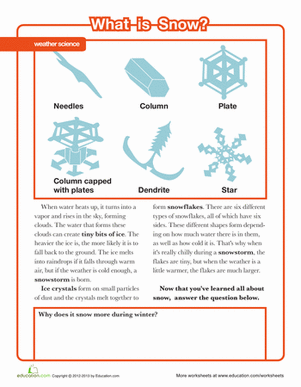Science project
What is Surface Tension?
Can you skate across the surface of liquid water? Water bugs can! Discover how water-skating insects use surface tension to keep from sinking by making a model water walker that can move around the surface of the water with a penny on its body.
Problem:
Can you design a water walker that can skate on liquid water?
Materials:
- Several pieces of cardboard
- Scissors
- Dishpan
- Water
- Tape
- Modeling wax
- Pennies
- Sponge
- Stopwatch
Procedure:
- First, cut out six strips of thin cardboard, each about half an inch wide. Put them in pairs, and tape each pair in the middle so that they make an “x”. The bottoms of the paper away from the center are the feet. Curve the foot ends of the first cardboard water strider slightly upwards. Do the same with the other water striders.
- Keep one water strider’s feet plain. Tape pieces of sponge to the second water strider’s feet. Tape pennies to the third. Create a hypothesis, your best guess about what you think will happen when you place each water strider in the water.
- Place each water strider into the water one by one. Start a stopwatch as you place each one into the water. Does your water strider sink? Does it float? If it floats, how long does it float? Can you blow on the water strider and get it to move across the surface of the water?
Results:
The water strider with pennies on its feet will sink, as will the water strider without pennies on its feet. The strider with sponges on its feet will float.
Why?
Water striders are in the family Gerridae, and they have many different names, including water skaters and water bugs.
Water is tense! The molecules of water are so tiny that you can’t see them, but you can see what happens when they cling to other water molecules.
The molecules at the water’s surface are in a special situation. They don’t like to stick to the air as much as they like to stick to each other. This creates surface tension, which means that the surface of the water acts like a kind of skin or trampoline for very small objects. Some very small objects can rest on the surface of the water as long as they’re small enough to not break the surface tension.
Some water walkers such as the basilisk lizard rely on the force of their feet to push down quickly on the water and move them forward. However, every time the lizard’s feet strikes the water, it breaks the water’s surface tension. The feet of a water strider rest on the surface of the water. The bug’s weight is distributed over each of its four feet, and the weight placed on each individual foot is not enough to break the surface tension.
When you placed the plain cardboard on the water, it may have rested there for a minute, spreading its weight across the surface of the water just like a water strider. Then the cardboard starts to absorb water and sink. What’s the water strider’s secret? If you were to look closely at a water strider’s feet, you would find many tiny, wax-covered hairs. These hairs create a special waterproof cushion that helps the water strider float as it walks on the water.
When you added sponges to the water walker’s feet, you distributed the weight of the water strider over a larger part of the water’s surface. You also added air-filled cushions that float easily, just like the air-filled feet of the water strider.
What would happen if you added modeling wax or another waterproof substance to your water strider’s feet? Get creative!
Education.com provides the Science Fair Project Ideas for informational purposes only. Education.com does not make any guarantee or representation regarding the Science Fair Project Ideas and is not responsible or liable for any loss or damage, directly or indirectly, caused by your use of such information. By accessing the Science Fair Project Ideas, you waive and renounce any claims against Education.com that arise thereof. In addition, your access to Education.com's website and Science Fair Project Ideas is covered by Education.com's Privacy Policy and site Terms of Use, which include limitations on Education.com's liability.
Warning is hereby given that not all Project Ideas are appropriate for all individuals or in all circumstances. Implementation of any Science Project Idea should be undertaken only in appropriate settings and with appropriate parental or other supervision. Reading and following the safety precautions of all materials used in a project is the sole responsibility of each individual. For further information, consult your state's handbook of Science Safety.













